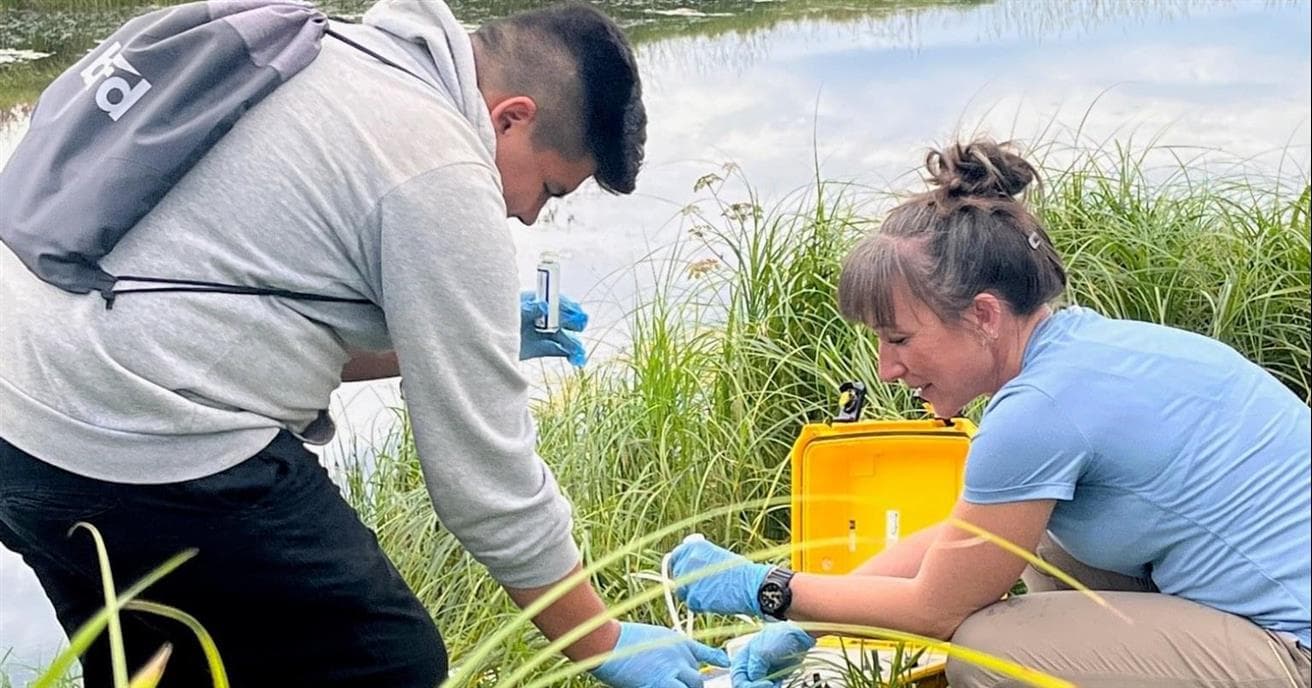The odd four-wheeler drives by on a nearby dirt road with curious onlookers--it’s not often one sees Suncor trucks on the reserve, which is nearly 200 kilometres from the oil sands.
The youth gathered around Sabrina, an environmental technologist and manager of Field Services at Suncor’s Base Plant mine, are from the Sekweha Youth Centre in Janvier. Sekweha means “for the youth” in Dene. It is here where the idea of “walking in two worlds” comes to life through the integration of culture and curriculum. At the centre the teens are shown career opportunities that compliment their culture, allowing them to thrive in both worlds.
“I have the best job,” Sabrina tells the group. “This job is exciting and fulfilling. I get to be outside, ride quads, go on boats and I get paid to help the environment.”
Two members of the group visibly perk up at hearing this.
Sabrina invites them to the water’s edge to fill a bottle of water and advises them to do so without air bubbles. She explains how by showing them the meniscus bulge. Sabrina’s passion is contagious, and the group is engaged and focused on this new task.
Sabrina has hosted field trips like this, called learning circles, in Indigenous communities for several years. Although she hasn’t kept in touch of the youth who’ve joined her in the field, she hopes that a seed of curiosity has sprouted into a rewarding career for some.
“Bringing the job to them and showing them what is possible within their frame of reference, puts a rewarding career at Suncor within their reach,” says Sabrina.
For this learning circle, Suncor teamed up with CAREERS, a not-for-profit that brings together industry and communities to guide youth into successful careers. The organization’s belief is that by showing Indigenous students a variety of career paths, they enter the workforce with more ability and confidence.
After trying his hand at soil sampling and surveying equipment, one of youth asks Sabrina what she does for a living. Sabrina explains that she is trained as an environmental technologist and follows up with a question of her own: “What are you interested in?”
“This,” he answers, holding up a vial of sampled water. “I want to do this.”



